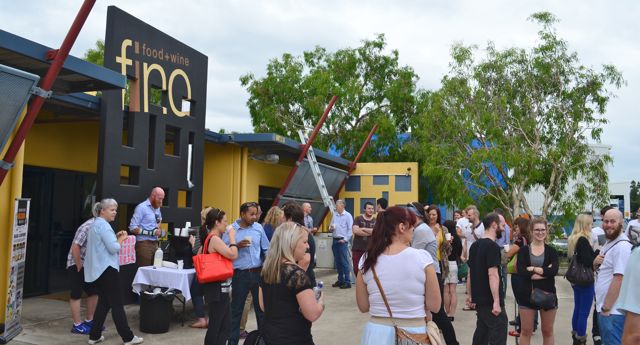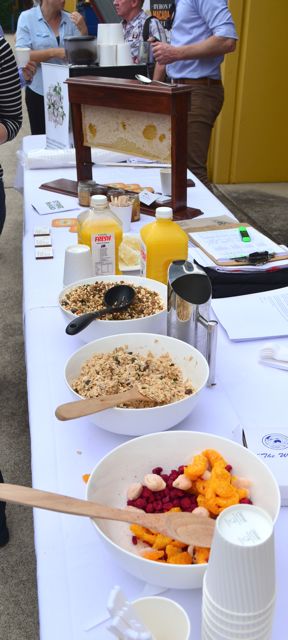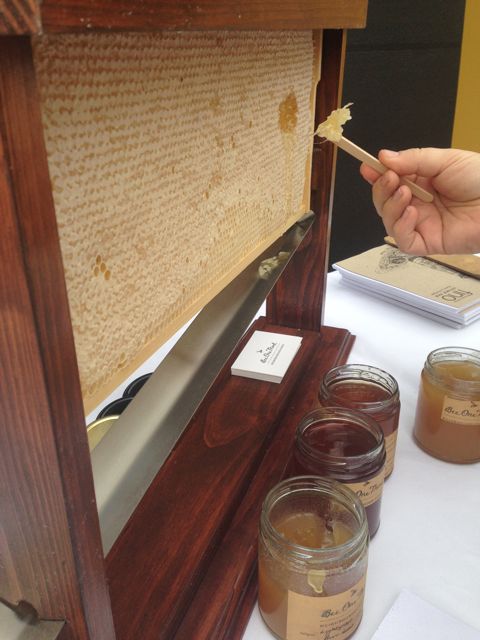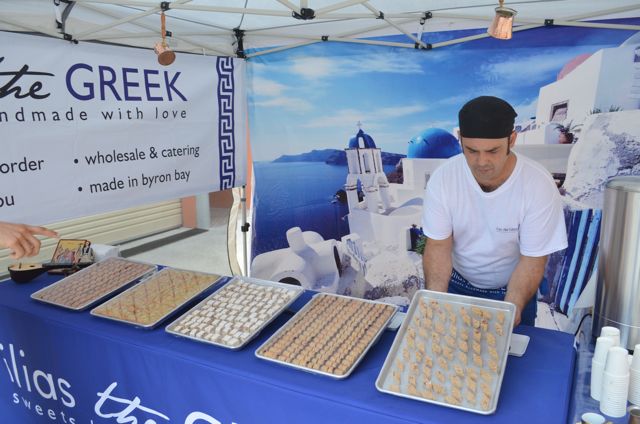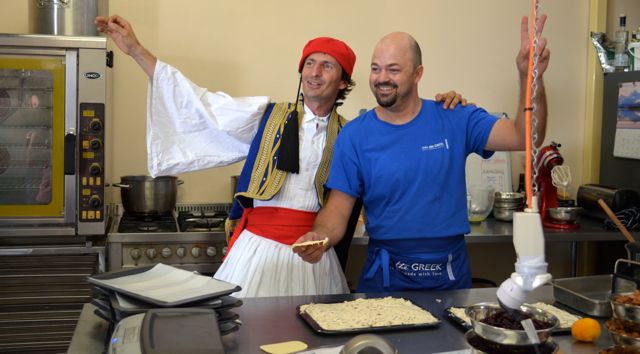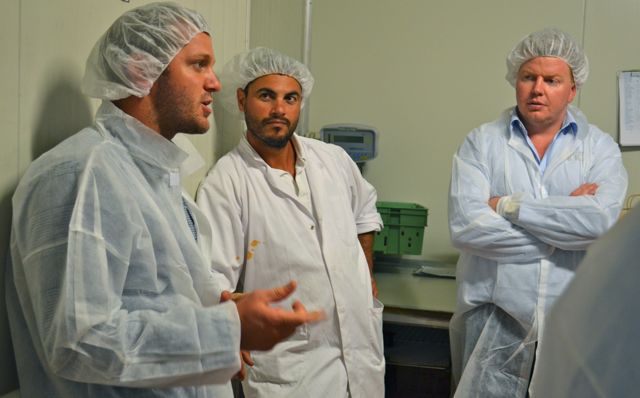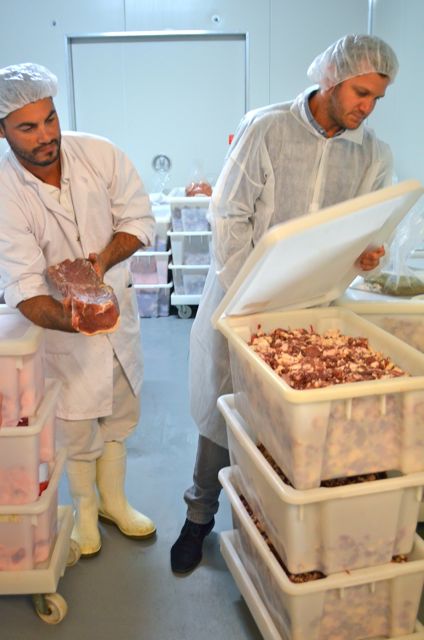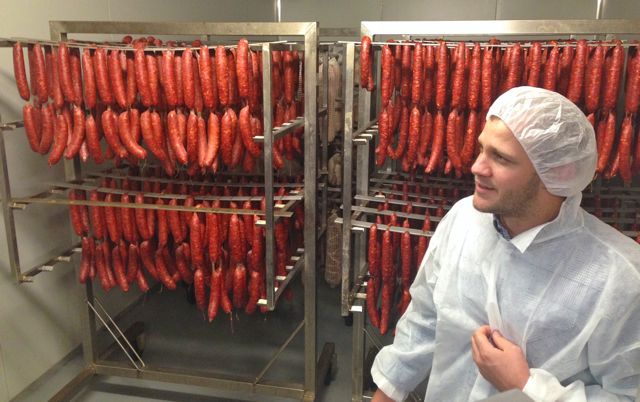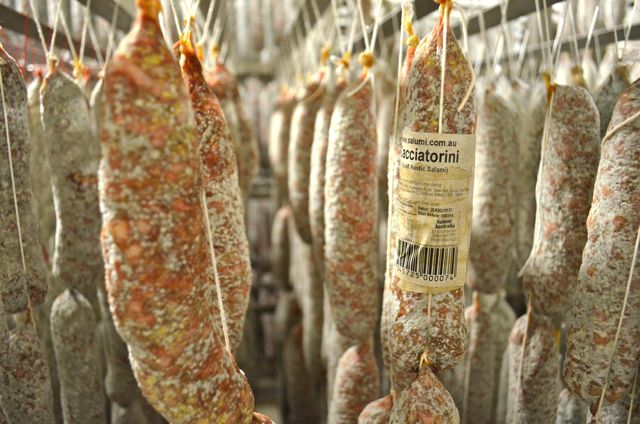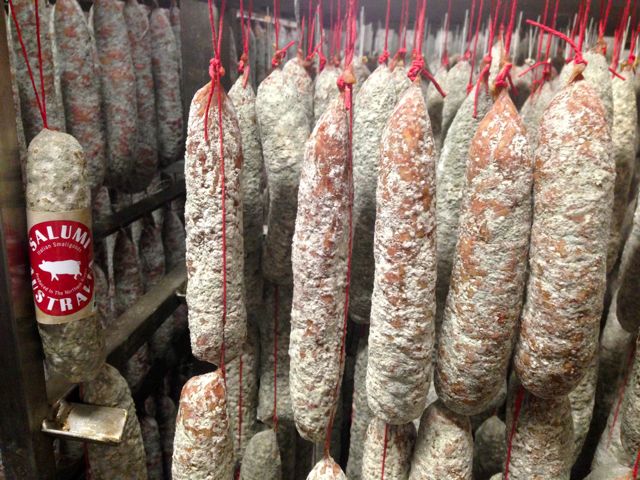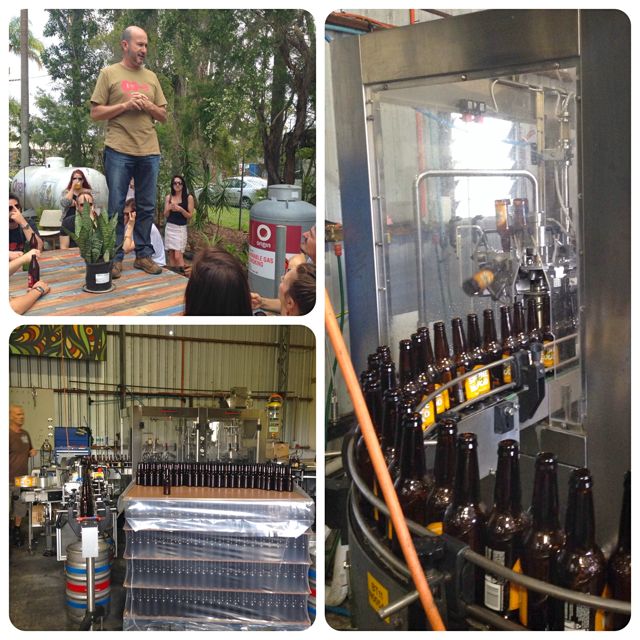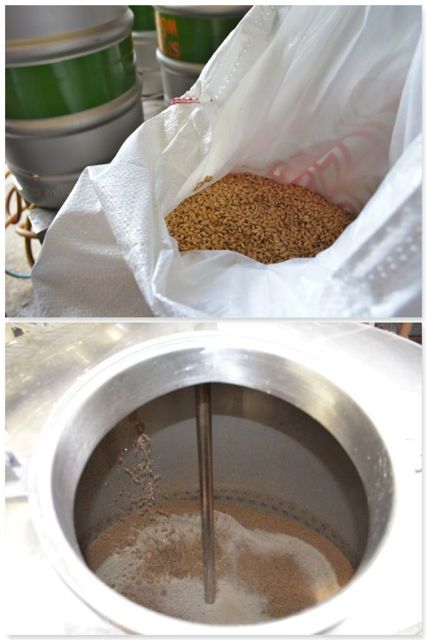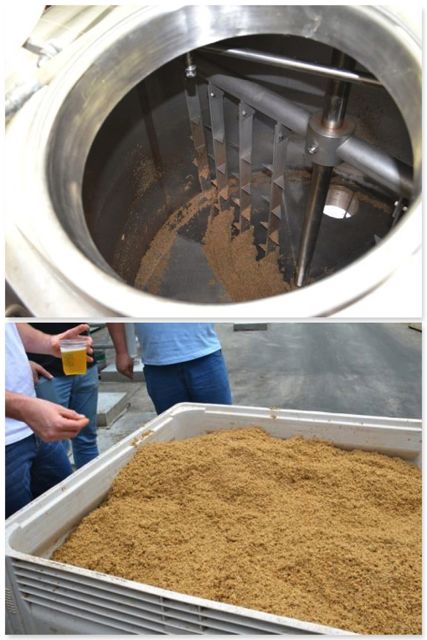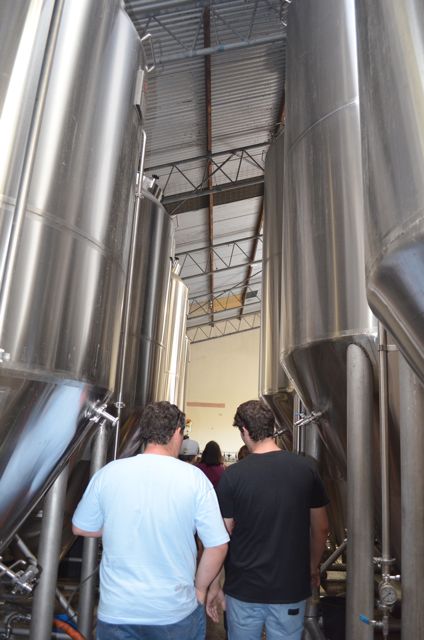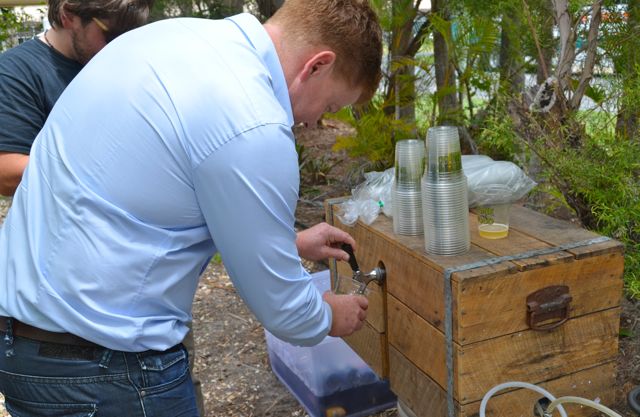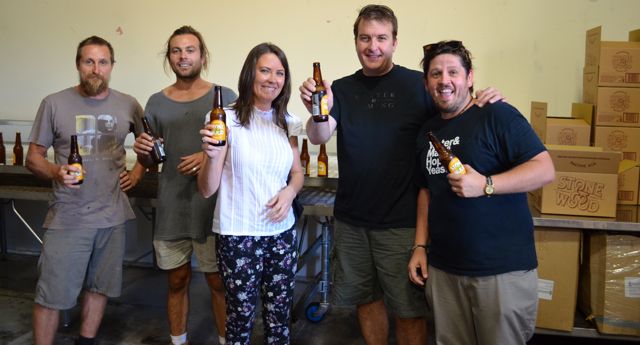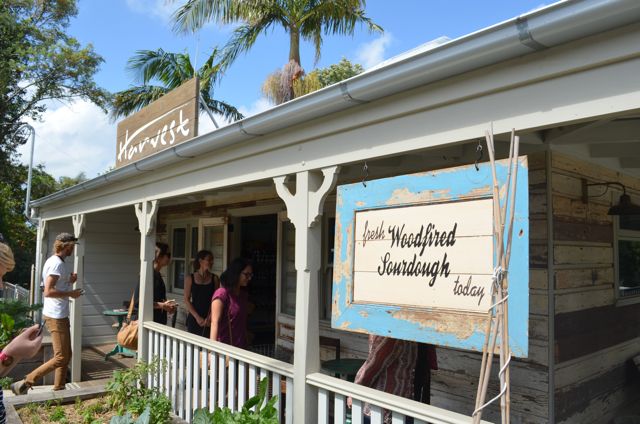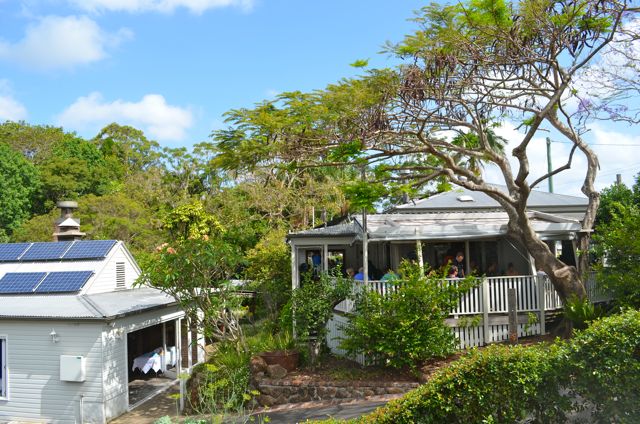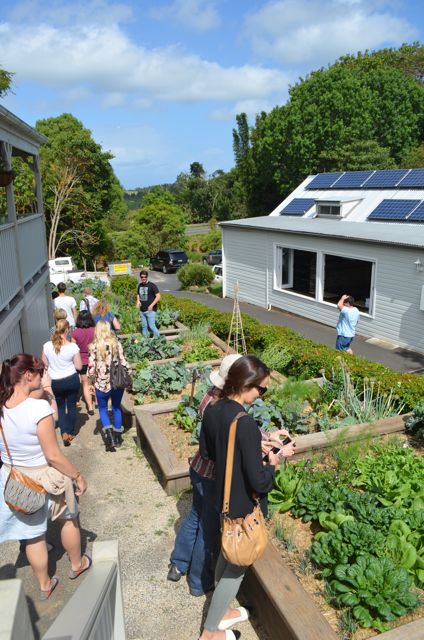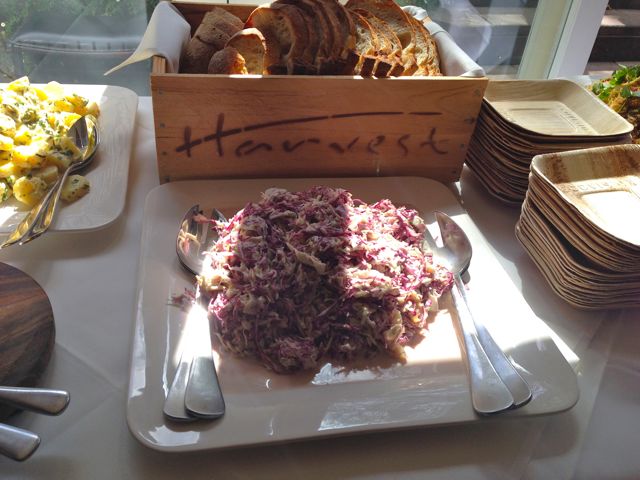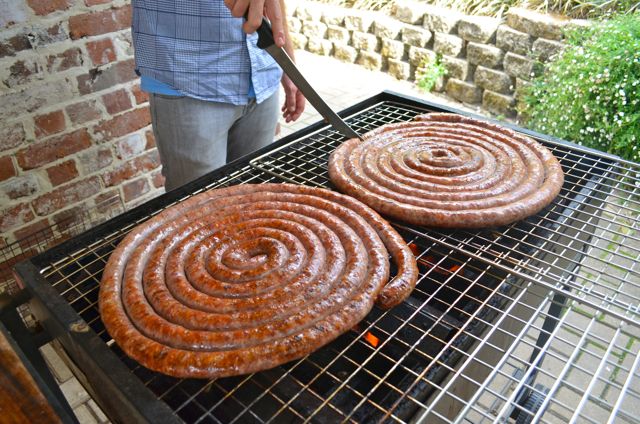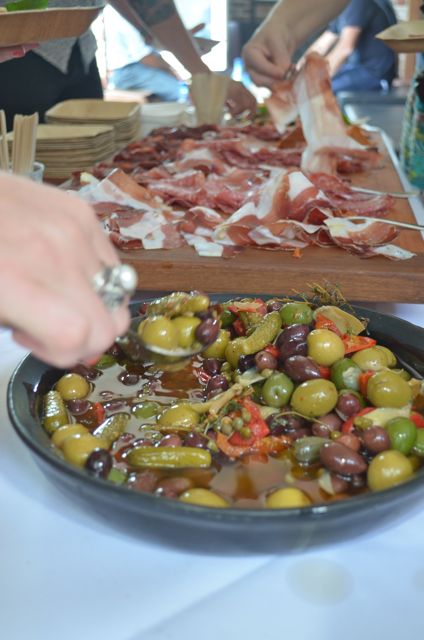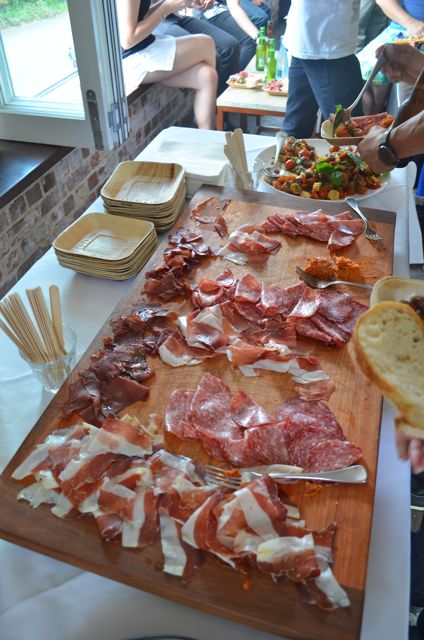The more I know about food the more there is to know about food! Thankfully for me, I have Brisbane based provider Michael Dalton of Fino Food & Wine on my side.
Fino Food & Wine together with Stone & Wood organised an exclusive day trip to the beautiful Northern Rivers region to give Brisbane based food enthusiasts the opportunity to meet some of our inspiring local producers.
Kicking off with the most important meal of the day, we congregated in front of the Morningside based Fino Foods warehouse. Coffee was first on people’s agenda then it was straight to the Byron Bay Muesli breakfast bar. Made with organic and bio dynamic ingredients, preservative and GM free, it’s no wonder Byron Bay muesli is one of Australia’s most award winning muesli’s.
To enhance our breakfast spread we were treated to a Bee One Third honey tasting fresh out of the hive!
Bee One Third have a mission to educate Brisbane city on the vital and extraordinary role of our indispensable honey bee. We all know that bees produce delicious honey, but they’re far more important than just that. Bees in fact pollinate over one third of the global food supply including hundreds of our fruits, vegetables, nuts and seeds. The thing is, bees are in trouble due to threats from pesticides and urban sprawl. Thankfully Bee One Third provide an ecological service using traditional methods to rehome wild colonies of bees into hives and onto the rooftops of our beloved Brisbane city.
With our breakfast bellies content it was time to load the troop onto the bus and onward bound we went.
Arriving at our first stop in Billinudgel NSW, we met with the charismatic, fun loving Ilias the Greek. Ilias the Greek has created an exciting range of sweets and pastries based on his traditional family recipes. Having moved from Kastoria in northern Greece to Australia, Ilias’ life down under certainly reflects his effervescent character. Ilias drag raced in Adelaide, lived with his grandparents in an underground home in Cooper Pedy where he partook in opal mining, became a private pilot and managed a local restaurant with the help of some knowledgeable Greek ladies. Tragically put into a coma after a rock fell onto his helmet, Ilias recovered and found that his senses were heightened and his spiritual connection was shaped. Ilias then moved to Byron Bay to partake in a yoga course and he says Byron encouraged him to participate in local markets. Here he shared his passion of creating high quality sweets with traditional family recipes infused with love – and you can taste the difference! His nougat is by far the nicest I’ve had; filled with cranberries and nuts the flavour is decadent but not too sweet.
Only a few steps away, we made our way to the neighbouring Salumi Australia warehouse to see how their award winning Salumi is produced. Before entering the controlled production room we first had to get kitted up in full white coat attire fitted with matching hair nets (very fetching indeed). When I first walked in I was taken back by the cleanliness of the space and how rich the earthy smells of the meat curing was. We were guided through every step of the Salumi process:
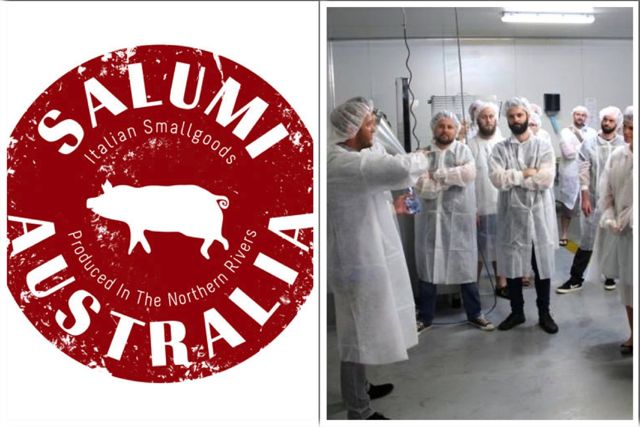
Step 1. CURING: Salumi – pork sourced from the northern rivers is minced and salt and spices are added, this process is completed within 24hrs. (You will find mass produced brands use more salt and nitrates to make the overall process faster).
Step 2. DRYING: Next the cured pork mince goes through the sausage filler, is hung and enters the drying room which is made up off a warm and humid atmosphere with plenty of indirect air circulation. The drying process lasts for up to 10 days before it is moved to a more-gentle atmosphere.
Step 3. AGEING: Low temperatures and lower humidity with very little direct airflow allow the product to breathe through a natural mould accumulated on the outside of the casing; this is critical for the overall flavour and ageing. This process, depending on the size/girth of the salami can last anywhere from 15 days to 100 days and up to 3 years for some of the larger legs
Step 3. AGEING: Low temperatures and lower humidity with very little direct airflow allow the product to breathe through a natural mould accumulated on the outside of the casing; this is critical for the overall flavour and ageing. This process, depending on the size/girth of the salami can last anywhere from 15 days to 100 days and up to 3 years for some of the larger legs
It was beer o’clock so without further ado we were whisked to our next stop – Byron Bay’s Stone & Wood Brewery. Here we got to sample icy cold beer straight off the packing line.
What’s fantastic about all the producers that we met on this trip is their commitment to sourcing locally wherever possible; Stone & Wood were no different. All the ingredients for their Pacific Ale are sourced in Australia, as are all of their raw materials and packaging.
Ever wanted to know how the golden ale that is beer makes its way to your panting palate?
Stone & Wood – The process:
MILLING is the first stage of the brewing process and involves passing malted grains (the barley – currently sourced from Victoria) through a mill to crack the kernels’ husks so the starches inside will be more accessible to enzymes.
MASHING The milled malt is then mixed with warm water making a porridge like consistency. The mash sits in a vessel called the mashtun (or conversion vessel) at a specific temperature. During this stage the enzymes in the malt convert the Starch into a range of soluble sugars.
LAUTERING The process of straining the solid spent grain from the liquid is called Lautering. The liquid is called the Wort. This sugar rich wort is drained off the malt (the husks act as a natural filter bed). The spent grain is then sent up the road to three local farms to be fed to the cows… they absolutely LOVE IT!
BOILING The wort is next transferred to the kettle and boiled. Hops are added at this stage, depending on what brew they are making. (Pacific Ale hops are sourced from Tasmania and other beer’s hops are from Germany).
WHIRLPOOL After the wort is boiled it is transferred into a whirlpool, which separates and removes any remaining sedimentary particles.
The liquid is then cooled in preparation for the yeast to be added to the mix. The liquid is transferred to stainless steel vats or fermentation tanks. The yeast feeds on the sugar-rich wort, creating the by-products, CO2 and alcohol.
Depending on the beer being brewed, the brew will sit in these tanks from 15 days to 4 weeks before being chilled in preparation to be bottled or kegged.
As we drank our icy cold Stone & Wood beers fresh off the bottling line we conversed with newly made friends and eventually loaded back on the bus to our last stop – Harvest Café.
Situated on the Old Pacific Highway in Newrybar (Byron Bay Hinterland) Harvest Café is dedicated to regional food, growing most of its fruit and vegetables on their own organic five acre vegetable farm.
Here we enjoyed a superb lunch in the vegetable gardens and feasted on bread from their recently refurbished 100 year old oven. (Restaurant Review to come).
As we began to make our way back to Brisbane I sat and pondered about the day. Why is it that I love food so much?! Of course it’s the never-ending search for the perfect mouthful but it’s so much more than that; it’s the romance of workmanship that goes behind it that I love. The strong influence that food has at connecting people with their community is a beautiful thing and should always be appreciated.




